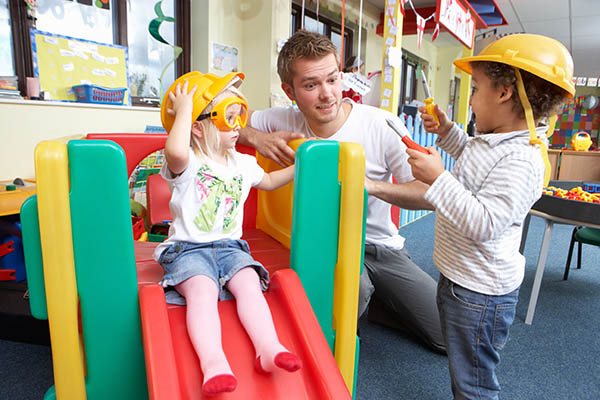Latex Allergy
Staff wear latex gloves to prevent contact with bodily fluids. However, allergic reactions to latex do occur. Use these tips to prevent allergic reactions to latex gloves.
 Making sure environments are safe allows children to explore and learn with less risk. Promoting a culture of safety prevents injury and illness.
Making sure environments are safe allows children to explore and learn with less risk. Promoting a culture of safety prevents injury and illness.
Review these resources to learn more about how to create safe environments.
Staff wear latex gloves to prevent contact with bodily fluids. However, allergic reactions to latex do occur. Use these tips to prevent allergic reactions to latex gloves.
Mold is an environmental trigger for allergy and asthma. Learn about the removal of fungal growth, remediation protocols, and the effectiveness of various cleaning strategies.
Watch this short webinar to learn about why the VEEC is important, who contributed to it, and to get a quick overview.
Mobile infants are developing more control of their head, torso, arms, and legs, and are beginning to coordinate those movements. They sleep less and are more active during the day, eager to engage in everything around them.
The Pro-Children’s Act of 2001 imposes restrictions on smoking in facilities where federally-funded children’s services are provided. Grantees that are subject to these requirements will find this information useful.
Review the insurance and maintenance regulations, quality health and safety practices, and policies that grantees should establish in their early care and education facilities.
The toddler years are a time when children are building skills in all areas. They remember what they learn and share it with others. They understand things more deeply, make choices, and engage with others in new ways. The changes in their physical, cognitive, and social-emotional development help them to build new skills that prepare them for school and later learning.
By the time they are preschool-aged, children are more independent in their play and their ability to meet their own needs. They focus on learning rules and routines to know what is safe and appropriate. Their constant dialogue with peers and caregivers helps them to form specific ideas about what is safe and why.